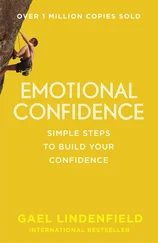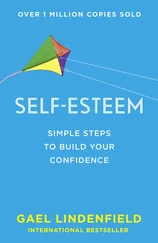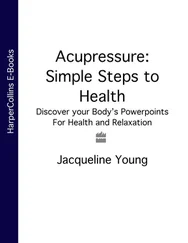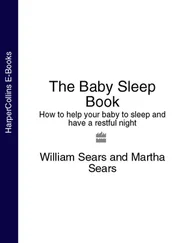• Maybe yes,if you have committed a crime and been punished but still feel guilty. But it would be advisable to work through this book with the support of someone who is a professionally trained psychotherapist or counsellor.
How to use this book
I suggest that you first read this book through quite quickly. You need not bother with the exercises or to practise the strategies now, but do mark up the parts of the book that you think could be useful for you. It would also be good to note down any examples of situations in your life that you have found difficult as they come into your mind when you are reading.
On your second reading, do the exercises and try out the strategies as you go, taking special care with the ones that you have marked. Again, make notes as you go along. After this reading, it could be very helpful to discuss the book with one or more of your friends. This might help to jog your memory and feel less alone with your problem.
Finally, make a prioritised list of issues that you want to resolve or work on. Then return to Chapter 9, Guilt into Goals, and do an action plan. Don’t forget to try to find a supportive person to help keep you on track.
Over the next few months, keep the book in a handy place where you can consult it whenever you need to. Having it lying around at home may encourage others to dip in and start wondering if this is something that may help them as well.
I do hope that you will find the book interesting and stimulating to read. I also, of course, hope that it will help you to move on with your life more happily and confidently.
CHAPTER 1
What Exactly Is Guilt, and What Is the Point of It?
Psychologists call guilt a ‘self-conscious’ emotion. Other emotions in the same category are pride, embarrassment and shame. All these emotions differ from our basic emotions such as fear, disgust and joy, which are more instinctive and universally felt during the first year of our lives. Self-conscious emotions develop later when we begin to get a sense of ourselves as separate from others. This usually occurs towards the end of the second year and through the third year of our lives. 2
Before we can feel guilt, we must be able to make judgements. This can’t happen until the thinking centre of our brain (the neocortex) is sufficiently developed. This means that babies and very young children cannot feel guilt. Their brains are simply not well enough developed to process it. Physiologically, they cannot understand the difference between right and wrong.
At thirteen months, my little granddaughter sometimes appeared to know when she had done something not allowed. She would throw her food on the floor and look at us with a big grin on her face. This was not because she enjoyed being wicked (that will come later!). Her smile had been generated because she was enjoying seeing the reaction of us adults. And perhaps because we were still in the honeymoon phase of grandparenting, we found her behaviour funny and so would laugh along with her. Unsurprisingly, she would then instantly repeat it without the slightest hint of guilt!
However, this guilt-free phase of life is all too short. I was recently taking a walk along a fairly deserted beach when I came across two little naked girls at the edge of the sea. When they spotted me one of them hastily stood up and placed her bikini pants over her private parts. Although they were giggling and smiling, I noticed that their heads were bowed. My guess is that they were around three years old, the age at which guilt starts to creep its way into our psyches. Fortunately for them it had not yet developed well enough to spoil their innocent enjoyment of being ‘naughty’.
This pleasurable stage in guilt’s development is one that many adults often try to recapture. Here are some examples you might recognise:
• Girls’ days out in health spas where groups of gym-toned, professional women get drunk on champagne and greedily devour forbidden desserts.
• Boys on get-fit golf breaks, egging each other on to have yet another drink until dawn appears.
• Carnival participants dressing up in outrageously shocking costumes and singing songs that in everyday life would not be tolerated.
• Office parties where people let their hair down and the next day return to work smiling but with their heads down, just like the little girls on the beach.
• Buying food and drink labelled guilt-free, while being aware that they may still be far from nutritious.
On a more serious note, some people simply cannot feel guilt at all. Early in my career I used to work on the locked wards of a large psychiatric hospital. Many of our adult patients had a reduced capacity to reason. Through disease or arrested development, the centres of their brains that are used to process guilt were not functioning. As a result, much of their behaviour would have appeared to the outside world as selfish, anti-social and excruciatingly embarrassing. Because they were incapable of feeling guilt, I – along with other members of staff – had to learn to accept and tolerate their behaviour. It was a good lesson to learn so young, because since then I have met many adults and young children in the outside world who are also incapacitated in this way.
What’s the point of guilt?
Guilt, like other self-conscious emotions, probably emerged in our human evolutionary development at the time when humans started to form groups. They did this in order to work and protect themselves from enemies more efficiently. The function of the self-conscious emotions was probably to make these groups stronger by encouraging loyalty and self-discipline. Anyone who has set up or led a group will know how important these two qualities are. Basic emotions such as fear and anger can be used to encourage or enforce discipline only up to a point. After a while they induce resentment and rebellion. Guilt, on the other hand, encourages self-control. We keep to ‘the rules’ because we don’t want to feel it. The pain induced by guilt is internal and therefore not as disruptive to the rest of the group as, for example, anger might be.
This is how we think nature first intended guilt to work. Note that nature has a back-up plan if Plan A doesn’t work (always an excellent idea!).
NATURE’S ORIGINAL PLAN A FOR GUILT
A group member breaks a written or unwritten group rule:
 The thinking centre in their brain assesses that they have done wrong and sends an alert to the emotional centre of their brain.
The thinking centre in their brain assesses that they have done wrong and sends an alert to the emotional centre of their brain.
 They feel guilty.
They feel guilty.
 They assume responsibility for the wrongdoing.
They assume responsibility for the wrongdoing.
 They are motivated to either repair any damage their wrongdoing may have caused, or to leave the group.
They are motivated to either repair any damage their wrongdoing may have caused, or to leave the group.
 The wrongdoer is either integrated back into the group or forgotten, and business carries on as usual.
The wrongdoer is either integrated back into the group or forgotten, and business carries on as usual.
NATURE’S ORIGINAL PLAN B FOR GUILT
A group member breaks a written or unwritten group rule:
 On feeling guilt, they don’t follow through with Plan A. They don’t own up, and they don’t make things right.
On feeling guilt, they don’t follow through with Plan A. They don’t own up, and they don’t make things right.
Читать дальше
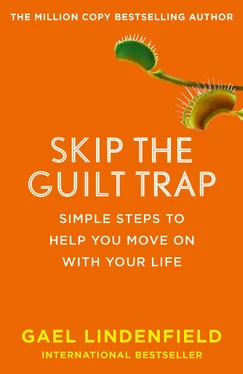
 The thinking centre in their brain assesses that they have done wrong and sends an alert to the emotional centre of their brain.
The thinking centre in their brain assesses that they have done wrong and sends an alert to the emotional centre of their brain.


